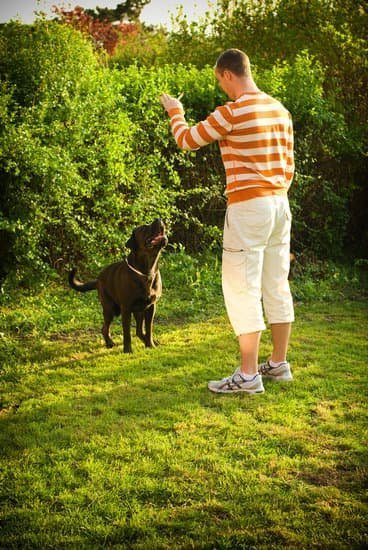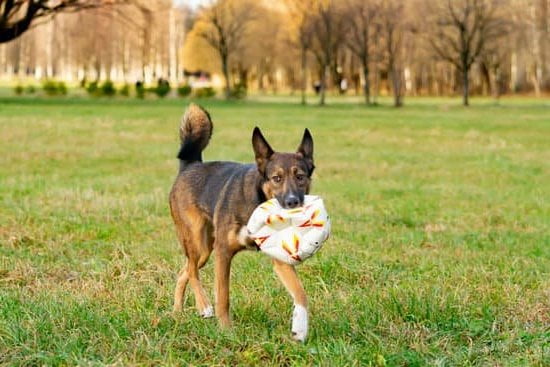Can you train a dog to quit biting? Understanding the root cause of biting behavior in dogs is essential to effectively address and prevent this issue.
Biting in dogs can be caused by various factors, including fear, anxiety, territorial behavior, and lack of socialization. In this article, we will explore the importance of early training and socialization in puppies, positive reinforcement techniques for bite inhibition, creating a safe environment for your dog, recognizing signs of aggression, and addressing fear and anxiety as triggers for biting behavior.
It is crucial to start training and socializing puppies at an early age to prevent biting behavior from developing. Positive reinforcement techniques such as rewarding good behavior and redirecting negative behavior can help teach bite inhibition. A structured environment with clear boundaries and consistent training are also important factors in preventing biting in dogs.
For more challenging cases, seeking professional help and resources can provide valuable support in addressing biting behavior. Understanding the signs of aggression in dogs, addressing fear and anxiety as triggers for biting behavior, and practicing consistency and patience are key elements to successful training a dog to quit biting.
Overall, by understanding the root causes of biting behavior in dogs and implementing proper training techniques, it is indeed possible to train a dog to quit biting. This article will discuss various methods and resources for managing and redirecting biting behavior in both puppies and adult dogs.
Importance of Early Training and Socialization in Puppies
Understanding the Critical Period
The first few months of a puppy’s life are crucial for their development and behavior. During this time, they are highly impressionable and can easily learn acceptable behaviors, including bite inhibition. Socialization also plays a key role during this period, as it exposes puppies to different people, animals, and environments, helping them become well-adjusted adults.
Positive Reinforcement Training Techniques
When it comes to teaching bite inhibition, positive reinforcement is essential. This means rewarding your puppy for desirable behaviors, such as licking instead of biting. By using treats, praise, and toys, you can help your puppy understand that gentle play is more rewarding than rough behavior.
Setting Clear Boundaries
Consistency is key when training a puppy not to bite. Make sure that everyone in the household follows the same rules and enforces gentle play. In addition to teaching bite inhibition during playtime, it’s important to set clear boundaries for other situations where biting may occur, such as during grooming or handling. By establishing these boundaries early on, you can prevent biting issues as your puppy grows into an adult dog.
Positive Reinforcement Training Techniques for Bite Inhibition
When it comes to training a dog to quit biting, positive reinforcement techniques can be highly effective in teaching bite inhibition. By using positive reinforcement, you can encourage good behavior in your dog and discourage biting without resorting to punishment or harsh training methods. Here are some positive reinforcement techniques that can help in teaching bite inhibition:
– **Clicker Training**: Using a clicker to mark the exact moment when your dog exhibits non-biting behavior, followed by a reward, can effectively teach them that gentle mouthing is encouraged while biting is not.
– **Reward-Based Training**: When your dog shows appropriate biting behavior, such as gentle mouthing or licking instead of hard biting, rewarding them with treats, praise, or playtime can reinforce the desired behavior.
– **Redirecting Attention**: Whenever your dog starts to exhibit biting behavior, redirect their attention to a chew toy or other appropriate item. This teaches them that chewing on toys is acceptable while biting humans is not.
Consistent use of these positive reinforcement techniques, along with patience and persistence, can help train your dog to exhibit more gentle and controlled mouth behaviors. It’s important to remember that every dog is unique and may respond differently to various training methods.
Creating a Safe and Structured Environment for Your Dog
One of the key factors in training a dog to quit biting is creating a safe and structured environment for them to thrive. This means establishing clear boundaries and routines, providing a comfortable and secure living space, and ensuring that your dog feels safe and relaxed in their surroundings. Dogs are more likely to exhibit unwanted behaviors, such as biting, when they feel anxious or threatened, so it’s essential to create an environment that promotes their well-being.
Start by designating a specific area in your home for your dog to call their own, such as a cozy bed or crate. This will give them a sense of security and provide them with a place to retreat when they feel overwhelmed.
Additionally, establish consistent feeding times and exercise schedules to help your dog feel more at ease with their daily routine. When your dog knows what to expect from their environment and daily activities, they are less likely to act out through biting or other undesirable behaviors.
Incorporating mental stimulation and enrichment activities into your dog’s daily routine can also contribute to creating a safe and structured environment. Providing toys, puzzles, and interactive playtime can help keep your dog mentally engaged and prevent boredom, which can lead to destructive behavior like biting. Overall, by creating a safe and structured environment for your dog, you are setting the foundation for successful training and helping them develop positive behaviors while minimizing biting tendencies.
Professional Help and Resources for More Challenging Cases
Addressing biting behavior in dogs can be a challenging task, especially when the behavior persists despite consistent training efforts. In more severe cases, seeking professional help and resources may be necessary to effectively address the issue. Trainers, behaviorists, and veterinarians can provide valuable insight and guidance in dealing with challenging biting behavior.
Professional trainers and behaviorists are equipped with the knowledge and experience to assess the root cause of the biting behavior in dogs. They can develop a customized training plan tailored to the specific needs of the dog, which may include addressing fear, anxiety, or aggression triggers. Additionally, they can provide hands-on training sessions and demonstrations for owners to implement at home.
Veterinarians also play a crucial role in addressing biting behavior in dogs. They can conduct thorough medical evaluations to rule out any underlying health issues that may be contributing to the behavior. In some cases, aggression or biting behavior may be linked to pain or discomfort, making it essential for veterinarians to address these factors as part of the treatment plan.
In more complex cases of biting behavior, certified applied animal behaviorists (CAABs) or board-certified veterinary behaviorists (DACVBs) may be recommended. These professionals have advanced training in understanding and modifying pet behavior and can offer specialized insight into resolving challenging biting issues in dogs. Seeking professional help and resources is an important step in addressing persistent or severe biting behavior in dogs, ensuring the safety and well-being of both pets and their owners.
Understanding the Signs of Aggression in Dogs
When it comes to training a dog to quit biting, it is crucial to be able to recognize the signs of aggression in dogs. Understanding the root cause of biting behavior is essential in addressing and correcting this issue effectively. Some common signs of aggression in dogs include growling, showing teeth, snarling, lunging, and nipping. It is important for dog owners to be able to identify these behaviors and seek professional help if necessary.
It is also important to note that aggression in dogs can be triggered by fear and anxiety. Understanding these triggers can help dog owners address the underlying cause of biting behavior in their pets. It is important for owners to create a safe and structured environment for their dogs, providing them with a sense of security and comfort to help alleviate any anxiety or fear that may lead to aggression.
In addition to recognizing signs of aggression, it is important for dog owners to practice consistency and patience when training their pets. Dogs respond well to positive reinforcement training techniques for bite inhibition. This involves rewarding good behavior and redirecting negative behavior without the use of punishment. Consistency and patience are key factors in successfully training a dog to quit biting, as it takes time for dogs to learn new behaviors and habits.
Addressing Fear and Anxiety in Dogs as a Trigger for Biting Behavior
Fear and anxiety are common triggers for biting behavior in dogs. It is important for dog owners to understand that when a dog is feeling fearful or anxious, they may resort to biting as a way to protect themselves. It is crucial to recognize the signs of fear and anxiety in dogs, such as cowering, trembling, growling, or excessive panting, so that the root cause of the biting behavior can be addressed.
One effective way to address fear and anxiety in dogs is through positive reinforcement training techniques. By using rewards and praise to encourage calm and confident behavior, you can help build your dog’s confidence and reduce their feelings of fear and anxiety.
Additionally, creating a safe and structured environment for your dog can also help alleviate their stress and prevent biting behavior. This includes providing a comfortable living space, establishing consistent routines, and ensuring that your dog has access to their basic needs such as food, water, exercise, and mental stimulation.
In some cases, professional help may be necessary to address fear and anxiety in dogs. A certified dog trainer or animal behaviorist can provide specialized training and guidance to help manage your dog’s fear-based aggression. They can also offer valuable resources and support for more challenging cases where fear and anxiety are deeply rooted in the dog’s behavior. Overall, addressing fear and anxiety in dogs requires patience, understanding, and consistent training methods to successfully prevent biting behavior.
Consistency and Patience
Establishing Clear Rules and Boundaries
When training a dog to quit biting, it is crucial to establish clear rules and boundaries from the beginning. Dogs thrive in structured environments where they understand what is expected of them. Consistency in enforcing these rules is essential for your dog to learn appropriate behavior. For example, if biting is not allowed, it should never be tolerated, regardless of the circumstances. This consistency helps your dog understand that biting is never acceptable.
Positive Reinforcement
Using positive reinforcement techniques can also play a significant role in training your dog to quit biting. When your dog displays non-biting behavior, such as licking instead of nipping, offer praise and rewards. This positive association encourages your dog to continue exhibiting non-aggressive behavior. Conversely, it’s important not to inadvertently reinforce biting behavior by giving attention or reacting in a way that may be perceived as rewarding when the dog bites.
Seeking Professional Help
In some cases, addressing biting behavior in dogs may require professional assistance. A certified dog trainer or animal behaviorist can provide expert guidance tailored to your specific situation.
They can assess the root cause of your dog’s biting behavior and develop a customized training plan to address it effectively. Additionally, if you are struggling with managing your dog’s aggressive tendencies or are unable to make progress on your own, seeking professional help is crucial for the safety and well-being of both your pet and those around them.
By consistently reinforcing non-biting behaviors, using positive reinforcement techniques, and seeking professional guidance when needed, you can significantly increase the likelihood of successfully training your dog to quit biting. Remember that patience and persistence are key throughout this process, as changing ingrained behaviors takes time and dedication.
The Role of Exercise and Mental Stimulation in Preventing Biting Behavior
Dogs, just like humans, need physical exercise and mental stimulation to keep them healthy and happy. Lack of both can lead to boredom and frustration, which can manifest in various behavioral issues, including biting. Providing your dog with regular exercise and mental challenges is crucial in preventing biting behavior.
Exercise is essential for a dog’s physical health and well-being. It helps them release excess energy, reduces stress, and promotes relaxation. A tired dog is less likely to engage in destructive behaviors such as biting out of boredom or pent-up energy. Daily walks, playtime, and activities like agility training can help keep your dog physically active and mentally stimulated.
In addition to physical exercise, mental stimulation is equally important for preventing biting behavior. Dogs are intelligent animals that require mental challenges to stay engaged and avoid boredom. Interactive toys, puzzle feeders, obedience training, and scent games are great ways to provide mental stimulation for your dog. Engaging their brain through these activities can help prevent them from resorting to negative behaviors like biting to alleviate boredom or frustration.
By incorporating regular exercise and mental stimulation into your dog’s routine, you can help prevent biting behavior by keeping them physically fit and mentally engaged. Providing an outlet for their energy and satisfying their need for mental challenges will contribute to a happier and better-behaved companion.
Tips for Managing and Redirecting Biting Behavior in Adult Dogs
In conclusion, training a dog to quit biting requires a combination of understanding the root cause of the behavior, early training and socialization, positive reinforcement techniques, creating a safe environment, and professional help if needed. It is important for dog owners to be aware of the signs of aggression in dogs and to address fear and anxiety as potential triggers for biting behavior.
Consistency and patience are key to successfully training a dog to quit biting, and providing adequate exercise and mental stimulation can also help prevent biting behavior in dogs.
For adult dogs exhibiting biting behavior, it is crucial to manage and redirect this behavior effectively. This can be achieved by providing appropriate chew toys, utilizing obedience training to teach commands such as “drop it” or “leave it,” and using distractions such as treats or favorite toys to redirect the attention of an adult dog exhibiting biting tendencies.
Additionally, seeking the guidance of a professional dog trainer or behaviorist can provide valuable insight into managing and redirecting biting behavior in adult dogs.
It is important for dog owners to understand that managing and redirecting biting behavior in adult dogs may take time and patience. By consistently implementing positive reinforcement techniques, providing mental stimulation, addressing any underlying triggers for the behavior, and seeking professional help when necessary, it is possible to effectively manage and redirect biting behavior in adult dogs. With dedication and support, it is possible for adult dogs to learn alternative behaviors and successfully quit biting.
Frequently Asked Questions
Can a Dog Be Trained to Stop Biting?
Yes, a dog can be trained to stop biting through consistent and patient training. It’s important to use positive reinforcement techniques such as rewarding the dog for not biting and redirecting their behavior towards appropriate chew toys. Professional trainers can also provide guidance on how to effectively train a dog to stop biting.
How Do You Discipline a Dog for Biting and Nipping?
When disciplining a dog for biting and nipping, it’s important to remain calm and avoid physical punishment. Instead, use verbal cues such as “no” or “stop” to communicate that the behavior is unacceptable.
Consistency is key, so make sure to respond in the same way every time the dog bites or nips. Additionally, providing appropriate chew toys and redirecting their attention can help prevent biting behavior.
How Do I Get My Dog to Stop Biting All the Time?
To get a dog to stop biting all the time, it’s important to address any underlying reasons for the behavior, such as fear, anxiety, or lack of socialization. Providing plenty of exercise and mental stimulation can also help reduce biting behavior by channeling their energy in positive ways.
Consistent training, positive reinforcement, and setting clear boundaries can also help discourage biting over time. Seeking professional help from a trainer or behaviorist may also be beneficial in addressing persistent biting issues.

Welcome to the blog! I am a professional dog trainer and have been working with dogs for many years. In this blog, I will be discussing various topics related to dog training, including tips, tricks, and advice. I hope you find this information helpful and informative. Thanks for reading!





